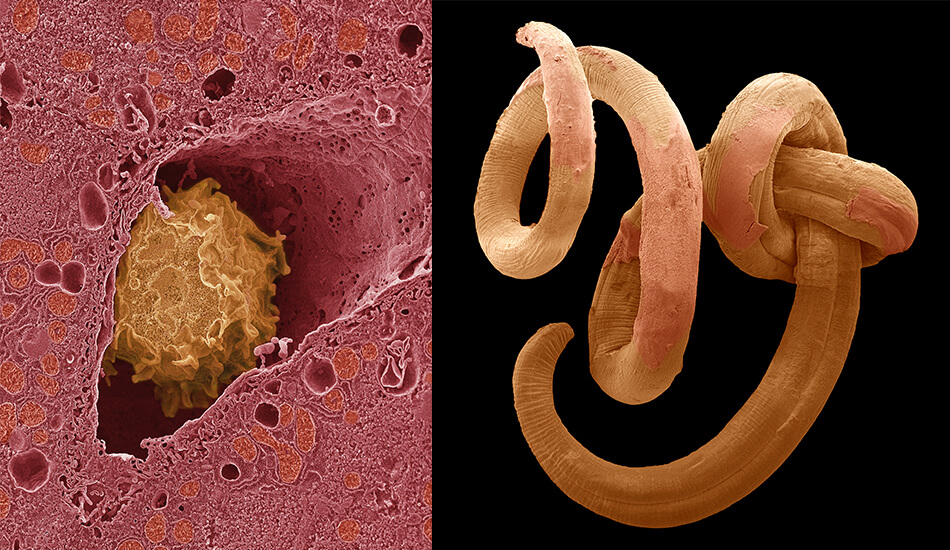Good Guy/Bad Guy: Macrophages vs. Pinworms

In the battlefield that is our human bodies, pathogen-chomping macrophages face off against harmful intruders that include the likes of parasitic pinworms.
Bad Guy:
This foe seems like something out of a horror film, a parasitic worm named Enterobius vermicularis (above right), commonly called a pinworm. Pinworms hatch in the small intestine after its eggs are accidentally, and unknowingly, ingested after contact with fecal matter and improper hand-washing. The pinworm is particularly ubiquitous in temperate climates like the U.S., Europe, and most of China. It’s ubiquitous enough, in fact, to have infected nearly all children by the age of 12 (which means at one time or another you, dear reader, had some of these wrigglers in your intestines).
Full-grown pinworms have sheer size and mobility on their side, helping them evade immune system defenses, as well as a tough surrounding cuticle that resists immune attacks. As the pinworms grow, they move into the colon and rectum, where they latch on, and the mature female — about the size of a staple at this point — crawls out of the body at night while the host is sleeping and lays eggs on the surrounding skin. The eggs prompt an itch, a scratch, and re-infection.
Good Guy:
Macrophages (above left, inside liver tissue) are a pinworm’s main enemy once inside the body, able to gobble up the eggs and smaller larvae. Macrophages most often start out as monocytes, the largest type of white blood cell at about 21 micrometers, or 0.00083 inches. But when a cell calls out for help using a signal protein called a cytokine, the monocytes rush out of the blood and enter the tissue, transforming into a macrophage specifically suited to its destination.
What makes macrophages rather remarkable is that they can actually engulf other particles. In fact, their name means “big eater” in Greek. First responders at an infection site, they turn predators, recognizing foreign particles like pinworms that they surround, suck inside themselves, and then break down using special enzymes called lysosomes. It’s a process called phagocytosis. The harmless bits they spit back out as waste. But the macrophage holds on to the identifying markers of the pathogenic pinworm, called antigens, waving them like flags to send out an SOS to other immune cells, called B-cells and T-cells, to join the fray.
—Johnna Rizzo
